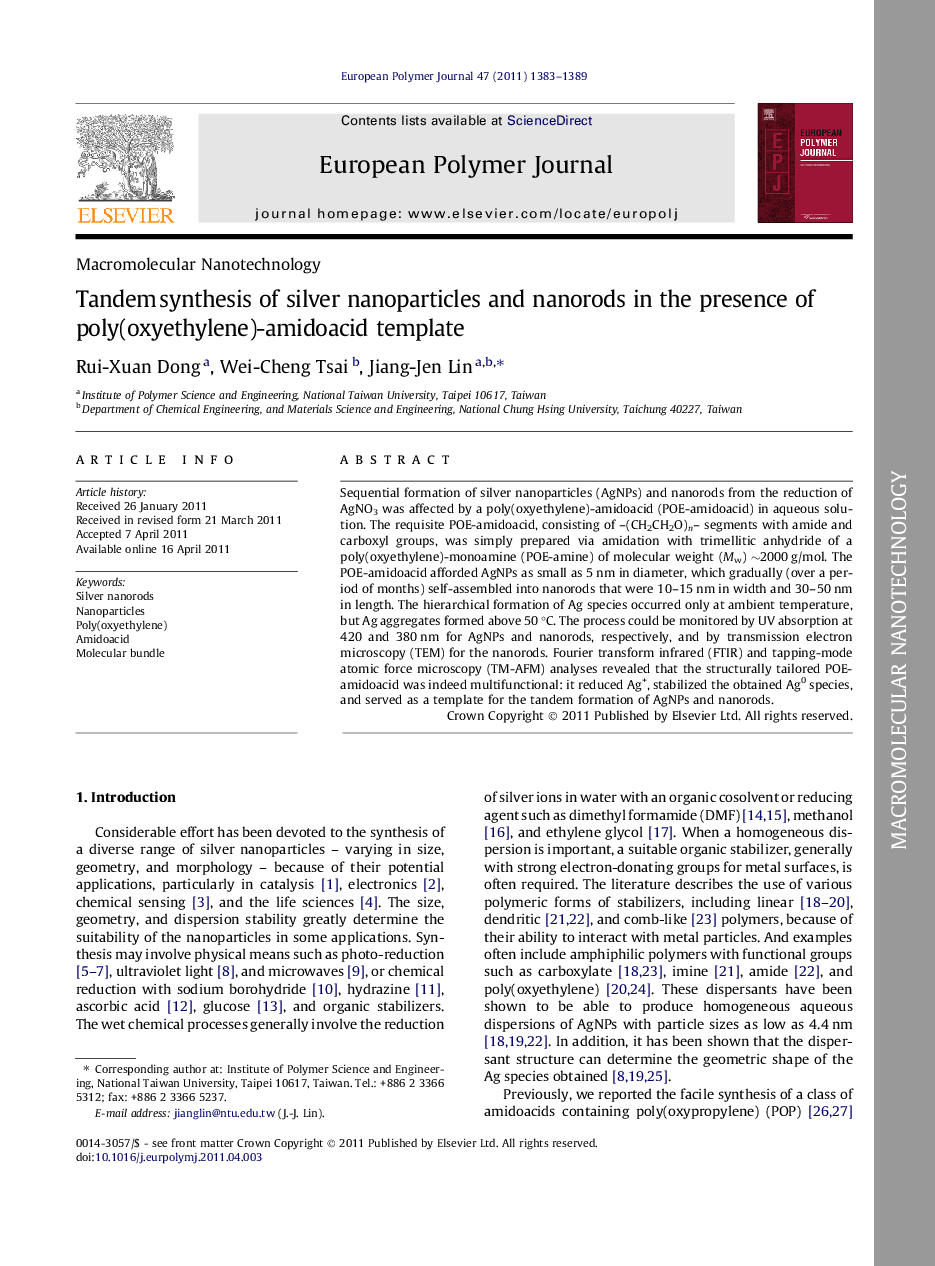| Article ID | Journal | Published Year | Pages | File Type |
|---|---|---|---|---|
| 1399896 | European Polymer Journal | 2011 | 7 Pages |
Sequential formation of silver nanoparticles (AgNPs) and nanorods from the reduction of AgNO3 was affected by a poly(oxyethylene)-amidoacid (POE-amidoacid) in aqueous solution. The requisite POE-amidoacid, consisting of –(CH2CH2O)n– segments with amide and carboxyl groups, was simply prepared via amidation with trimellitic anhydride of a poly(oxyethylene)-monoamine (POE-amine) of molecular weight (Mw) ∼2000 g/mol. The POE-amidoacid afforded AgNPs as small as 5 nm in diameter, which gradually (over a period of months) self-assembled into nanorods that were 10–15 nm in width and 30–50 nm in length. The hierarchical formation of Ag species occurred only at ambient temperature, but Ag aggregates formed above 50 °C. The process could be monitored by UV absorption at 420 and 380 nm for AgNPs and nanorods, respectively, and by transmission electron microscopy (TEM) for the nanorods. Fourier transform infrared (FTIR) and tapping-mode atomic force microscopy (TM-AFM) analyses revealed that the structurally tailored POE-amidoacid was indeed multifunctional: it reduced Ag+, stabilized the obtained Ag0 species, and served as a template for the tandem formation of AgNPs and nanorods.
Graphical abstractFigure optionsDownload full-size imageDownload as PowerPoint slide
